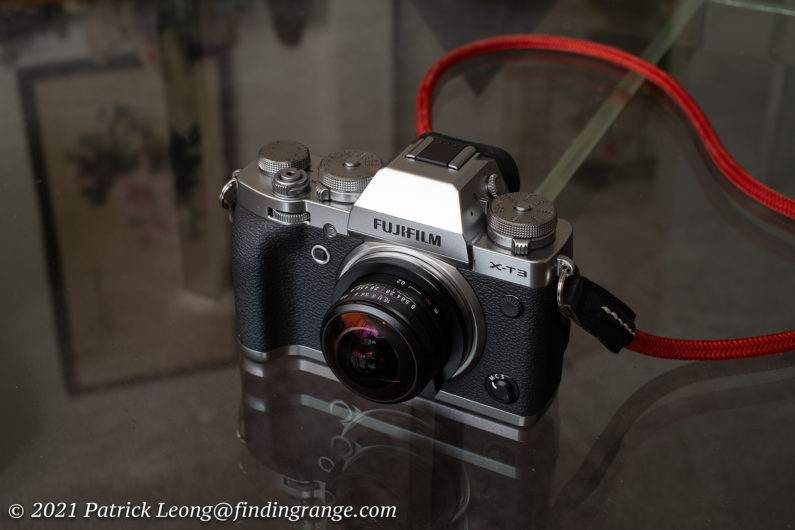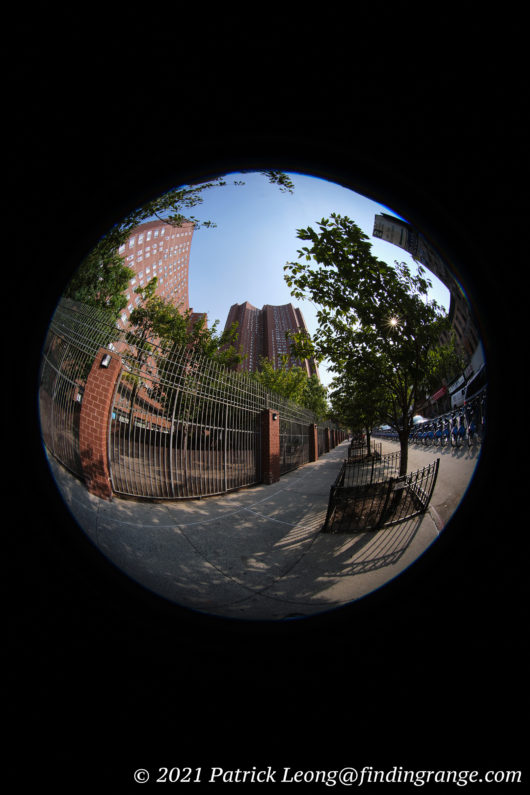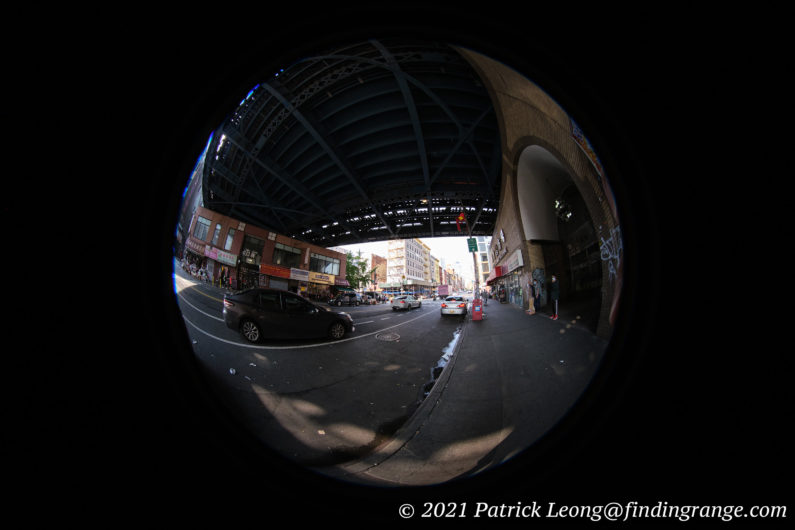Venus Optics Laowa 4mm f2.8 Fisheye Lens Review:
If you’re looking for something that is a bit different, and will add some fun back to your photography, a fisheye lens is something that can be great to use. There are quite a few out there these days for many different systems, and all in various price ranges. One of them is the Venus Optics Laowa 4mm f2.8 Fisheye, which is one of the widest focal lengths currently on the market. It comes in several different mounts ranging from Leica L to Fuji X mount. I was able to get my hands on an X mount version, and here’s my review of it.
Venus Optics Laowa 4mm f2.8 Fisheye Lens Build Quality:
So, let’s take a closer look at this lens by starting with the build. The 4mm f2.8 fisheye currently retails for just $199, so honestly speaking, I wasn’t sure what to expect. I’ve used lenses in this price range before, and I haven’t always been happy with the overall quality. I’m happy to report that this lens isn’t just built well for something in this price range, it’s built well period. The build quality of the Laowa 4mm f2.8 Fisheye is, quite frankly, excellent. It feels very solid thanks in part to its all metal design. The aperture ring clicks nicely as you rotate it. The focus ring is also very smooth, and it even comes with a focus tab, which is a great help considering the size of the lens. Lastly, in addition to the Fuji X mount version that I’ve reviewed here, the 4mm f2.8 Fisheye comes in Leica L, Sony E, Canon EF-M, Nikon Z, and Micro Four Thirds mount as well.

↑ The Fuji X-T3 with the Venus Optics Laowa 4mm f2.8 Fisheye attached.
Furthermore, while the 4mm f2.8 Fisheye has a rather large maximum aperture, it’s still very tiny as you can see in the photos. The result is something that is plain out easy to carry around all day. Even if you choose to use this lens for only special occasions, it’s something you can can just leave in your bag all the time for those “just in case” moments. It takes up barely any room, and it only weighs 4.8 oz (135 g).

↑ Here’s a top view of the lens, so you can get a better idea of the size.
The only issue is that since this lens is so tiny, and at the same time, so wide in terms of focal length, you have this huge bulbous shape in the front of the lens. It’s not always easy to avoid touching it by accident. It’s just right there in front, and there’s not much barrel to hold onto or even a lens hood (since this lens is so wide), which can result in accidental touching of the front element. This can make it a bit more difficult to remove and attach the lens to the camera body.

↑ The Laowa 4mm f2.8 Fisheye does come with a focus tab, which makes this lens much easier to focus given its tiny size. You do have to be careful of the bulbous front element though.
Luckily, the Venus Optics Laowa 4mm f2.8 Fisheye actually comes with a metal lens cap that not only covers the front element but also nearly the entire body of the lens. I particularly like the design of the lens cap, and feel it’s very important for something this tiny that also has a huge bulbous front element. With a lens cap like this, it not only makes it much easier to attach and remove the lens, there is nearly no way the lens cap will accidentally come off while it’s in your bag, for instance. With a bulbous front element like the one on this lens, that’s something I would never want to happen.

↑ Here’s the lens cap.
There is another issue I want to mention that is partially caused by a lens that offers this wide of a focal length that is also tiny in size. With the lens being so close to the camera body, and offering an incredible 210º view, I could actually see my hand holding the hand grip of my Fuji X-T3. In fact, if I were to hold the camera up to my face to take a picture by looking through the viewfinder, my elbows, legs, and feet would be in the photo as well. Keep in mind that all of what I just said is actually behind the camera too.
So, for me to take pictures, I had to hold the camera away from my body, and use the LCD display. To hold the camera I had to make sure to use only the pressure of my fingertips on each side of the camera, so they would not be in the photos. I also had to make sure my neck strap was around my neck because if it was left dangling or even around my wrist, I might actually see it in the photos. The good news is since it’s a 4mm focal length, the depth of field is enormous, so I really didn’t have to worry about precise focusing. So, once I was able to get a general focus of my subject by viewing it through the viewfinder of my camera, I didn’t really have to worry much about focus when I raised the camera away from my body to shoot the photo.
Venus Optics Laowa 4mm f2.8 Fisheye Lens Image Quality:
Let’s talk about the image quality now. I have to say, the Venus Optics Laowa 4mm f2.8 Fisheye is quite impressive for a fisheye with such an extreme design. Again, I wasn’t sure what to expect for $199 but I was very happy with the results.

↑ This was taken using f8 and 160 ISO in the late afternoon.

↑ This was taken using f8 and 160 ISO.

↑ Here’s a photo taken with f2.8 and 160 ISO.
For one, this lens is actually quite sharp. Obviously, I’m not going to really test for corner sharpness or distortion, since this is a fisheye. But with that said, this lens actually does quite well even in the corners in terms of sharpness considering it is a fisheye. It’s also very sharp at f2.8, so the larger maximum aperture isn’t just for show or bragging rights. It’s something you can definitely use for low light work, for example. As you stop down, sharpness does improved, of course. For instance, at f5.6 to f8, sharpness is downright excellent.

↑ Here’s a shot taken at f8 and 160 ISO.

↑ Here’s a 100% crop of the photo above.

↑ This was taken using f4 and 400 ISO.

↑ Here’s a 100 crop of the photo above.
As for other features, contrast and color rendering look nice. There is some chromatic aberration, and vignetting, which shouldn’t come as a surprise considering this lens’ fisheye capabilities. There’s also the occasional flaring here and there. Of course, don’t even ask about bokeh because there’s not much shallow depth of field that you’ll get from a lens like this given it’s ultra wide angle focal length. Overall, I found the optics to be excellent considering this is a fisheye lens. I was surprised in a good way. I feel it’s good enough that I think Venus Optics Laowa can probably increase the price here a bit :).

↑ This was taken at f11 and 160 ISO.

↑ Here’s a photo taken at f8 and 160 ISO.

↑ This was taken at f5.6 and 160 ISO.
Pros And Cons:
Pros:
- Well built lens using quality parts.
- Comes in many different mirrorless mounts.
- Excellent lens cap.
- Ultra compact and light.
- Incredible 210° view
- Great optics.
- Excellent price.
Cons:
- Care has to be taken with the huge bulbous front element given its tiny size.
- It can be difficult to even hold the camera because the 210° captures so much around it.
Venus Optics Laowa 4mm f2.8 Fisheye Lens Verdict:
If you’ve been in a photography rut or you just want something that is going to give you a completely different photographic experience, it’s hard to beat a fisheye in my opinion. They are just so fun to use, and will give you something completely different than more traditional lenses. To me, the Venus Optics Laowa 4mm f2.8 Fisheye maximizes the fun because it’s kind of extreme given its 4mm focal length. It’s amazing how much you can actually see from using this lens.



I feel the Laowa 4mm f2.8 is a fantastic option for those looking for a fisheye for smaller mirrorless systems because it’s such a great package overall. For one, you’re getting great image quality but at the same time, you’re getting it all in a package that is so tiny, and easy to carry around. In addition, you have a pretty fast maximum aperture, which only increases the versatility of this lens. Lastly, the price for all of this is quite good. It retails for just $199, and just on the build quality alone, I feel this lens should cost more. For those who may only use a fisheye occasionally or for those who have never used one before but are curious, I imagine the price tag here sure makes it a lot easier, especially if you know that you’re also getting a quality lens.



↑ Here’s one more photo of the Fuji X-T3 with the Laowa 4mm f2.8 Fisheye attached.
It’s definitely not the easiest lens to use given how wide it is but that’s not always a bad thing. I found myself a bit challenged by the 4mm f2.8 fisheye during the first few days I was using it, especially since I haven’t been using ultra wides as much as I used to given that my work doesn’t really require one much. However, as time went on while I was using this lens, I found myself being pushed, and making more effort to find ways to be creative. So, if you’re in the market for a fisheye, check out the Venus Optics Laowa 4mm f2.8 Fisheye.
Thanks for taking the time to read my review! If you’re considering purchasing the 4mm f2.8 Fisheye, and my review helped you decide, please help support this site by purchasing from the links below or any mentioned in this review. It will not cost you anything extra. Thank you for your support!


A great review of a challenging lens to use. If you master the correct usage of a fisheye you can create fascinating images. They are a specialty lens and fun to try out.
The only problem with them and ultra-wide angles are that people think they will improve their pictures. In contrast, they are far more challenging to use. If you cannot take a great picture with a 35mm or 50 mm, it is only only going to be magnified with ultra wide lenses. I used to belong to 3 camera clubs a few years ago, but quit as most people thought that a more expensive camera or extreme lenses would improve their photography instead of paying for books, videos, or workshops.
Anyway, with October here, we seem to be past the season for wide angles :). Fall is the perfect time to get a 90mm SL APO or Sigma 105/1.4 out . Hence, I am trying to decide between the two. Is the very significant weight and size difference worth the difference? That is the question some people with $200 canadian are wonderful in this great season.
Thanks a lot, Brian! Means a lot coming from you!
I also completely agree with you about the gear. You really need to know how to use the gear before you invest in more expensive stuff. In fact, if you know what you’re doing, you don’t even need to buy the latest and greatest, especially these days when even kit cameras offer quite a lot in terms of performance and image quality. And yes, if you’re not able to shoot with a 35mm or a 50mm, then chances are, the ultra wide angle lens is just going to make things worse haha.
As for the 105mm, I have good news for you :). I finally asked for one, and I think I should be getting it very soon. Just so you know though: if I end up buying this lens, it’ll be all your fault haha. Btw, did you receive my reply to your email? I just wanted to make sure it got to you.
I received your reply. It was slow getting to me as I live on a different planet.
I look forward to your review of the 105/1.4 and thoughts on whether the weight and size is worth it over the SL 90/2 at max aperture. I think it will create unique compelling images but the SL 90 is relatively small. Eek.
Ok good to hear.
I should get the 105mm f1.4 on Friday but I have a bunch of other items that need to be reviewed first. However, I will have the 105mm a little bit longer, so I’m hoping to be able to set up a shoot or two to test the lens. I can tell you by just looking at photos I find on the web that the 105mm is definitely going to give you a different look than the 90mm lol. The 90mm is an amazing lens but that 105mm is also something that is just truly unique. Like I said, I’m afraid to test it because I might not be able to live without it haha.